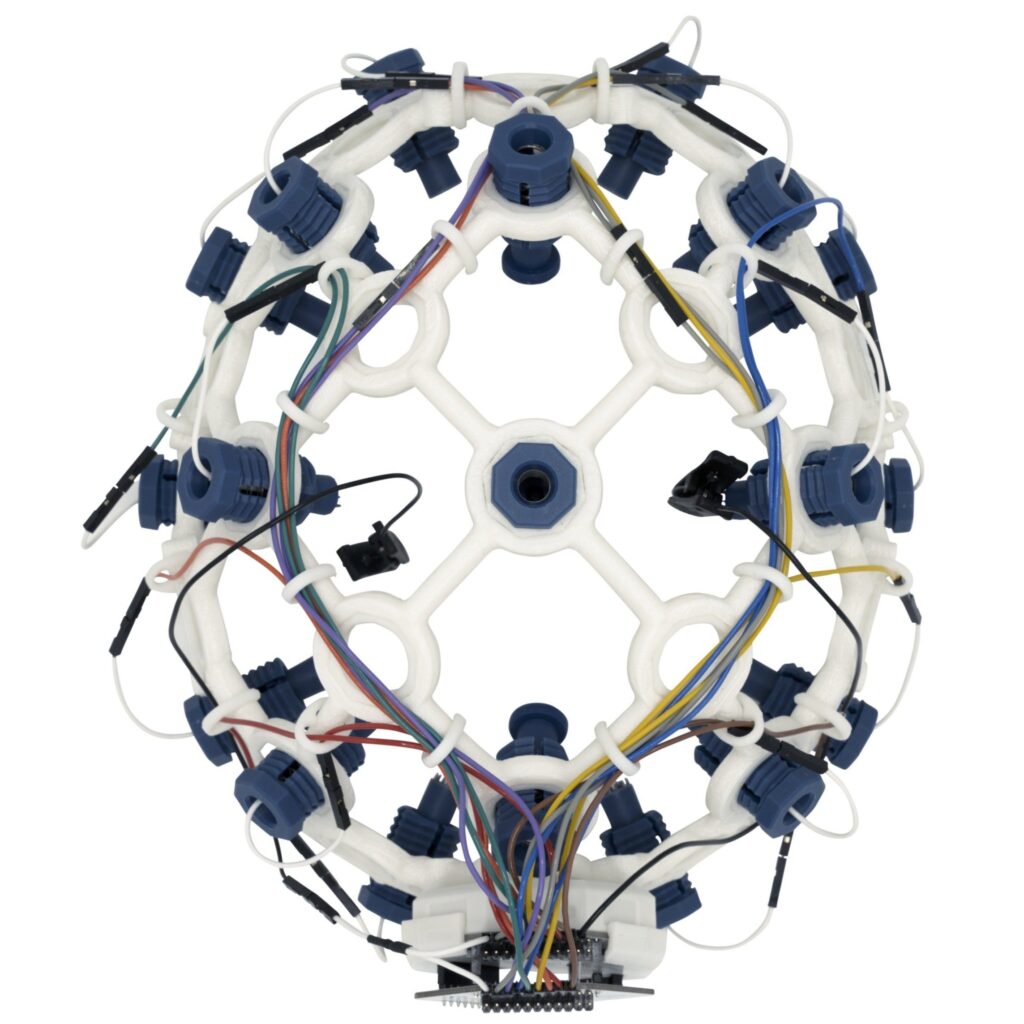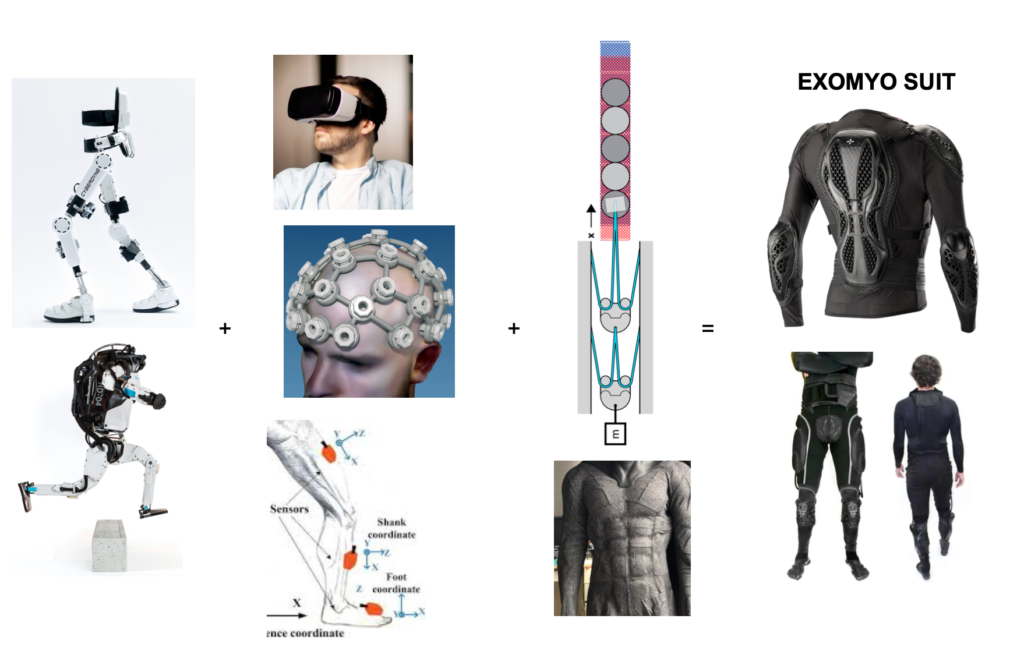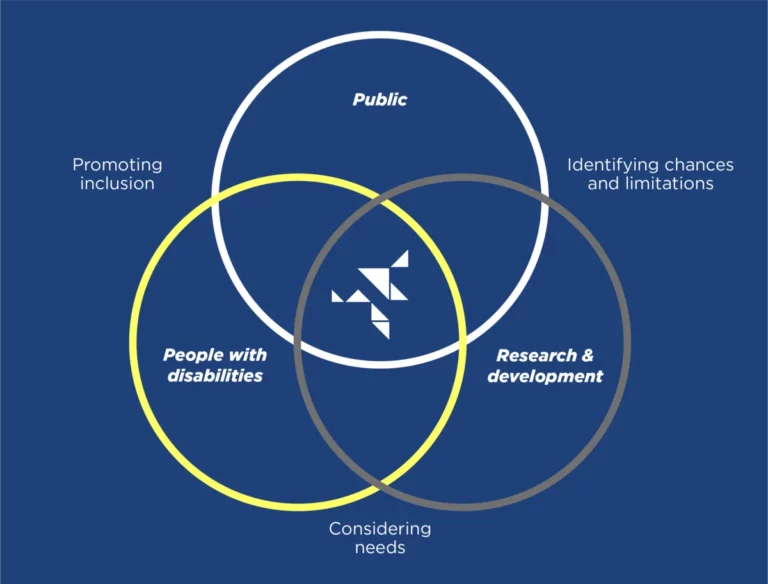 Recent strides in robotic motion, both in hardware and software have made more natural bipedal mobility a possibility. Leveraging existing and novel approaches, Maschinenmensch will partner mobility technologies and machine learning solutions along with a BCI control system to achieve balanced, efficient bipedal movement for a partial to fully paralyzed individual. For control, we will leave balance and movement up to robotic algorithms and the intent to the human. The suit itself will utilize the body’s existing skeleton and adds a soft shell “muscle” (myo Greek) with electromagnetic actuators, not so much an “exoskeleton” as an “exomyo”.
Recent strides in robotic motion, both in hardware and software have made more natural bipedal mobility a possibility. Leveraging existing and novel approaches, Maschinenmensch will partner mobility technologies and machine learning solutions along with a BCI control system to achieve balanced, efficient bipedal movement for a partial to fully paralyzed individual. For control, we will leave balance and movement up to robotic algorithms and the intent to the human. The suit itself will utilize the body’s existing skeleton and adds a soft shell “muscle” (myo Greek) with electromagnetic actuators, not so much an “exoskeleton” as an “exomyo”.
A machine learning trained system robotic system will manage balance and power of the bionic system while the BCI and muscle sensors will allow the user to control pace and direction. With today’s technology, the development of a full bodied powered assistive body suit is within reach. Over the past decade, the systems have become dramatically more agile and effective with lighter, stronger materials, efficient, low profile actuators, efficient, powerful long lasting batteries and more natural algorithms for balance and gait. Companies and universities have been developing amazing algorithms for bipedal robotic walking – even jumping, running, flipping and parkour (see Boston Dynamics). Currently available motorized and/or mechanized exoskeletons have benefited from these advancements.
Exoskeletons like ReWalk assist the user’s existing gait and require other parts of the body to be active in balancing. The EksoNR claims robotics in its active assist from hip to ankle. SuitX designed requires the shifting center of gravity and controls in the crutches to determine gait and a swing-and-lock knee design to leverage the natural swing of the lower leg during walk. Clinatec built a full body exoskeleton that uses a BCI to aid in movement and control. The project included 2 direct brain interfaces (brain implants) and a full body exoskeleton frame and used the signals for timing of the gait and balance.

Each solution has effective designs but not without requiring upper body cooperation or high profile motors and framework. Individually, the exoskeletons each have design solutions that could be even stronger combined in one design. However novel approaches will be required to achieve balanced, efficient bipedal movement for a fully paralyzed individual.


